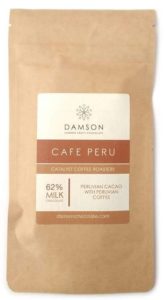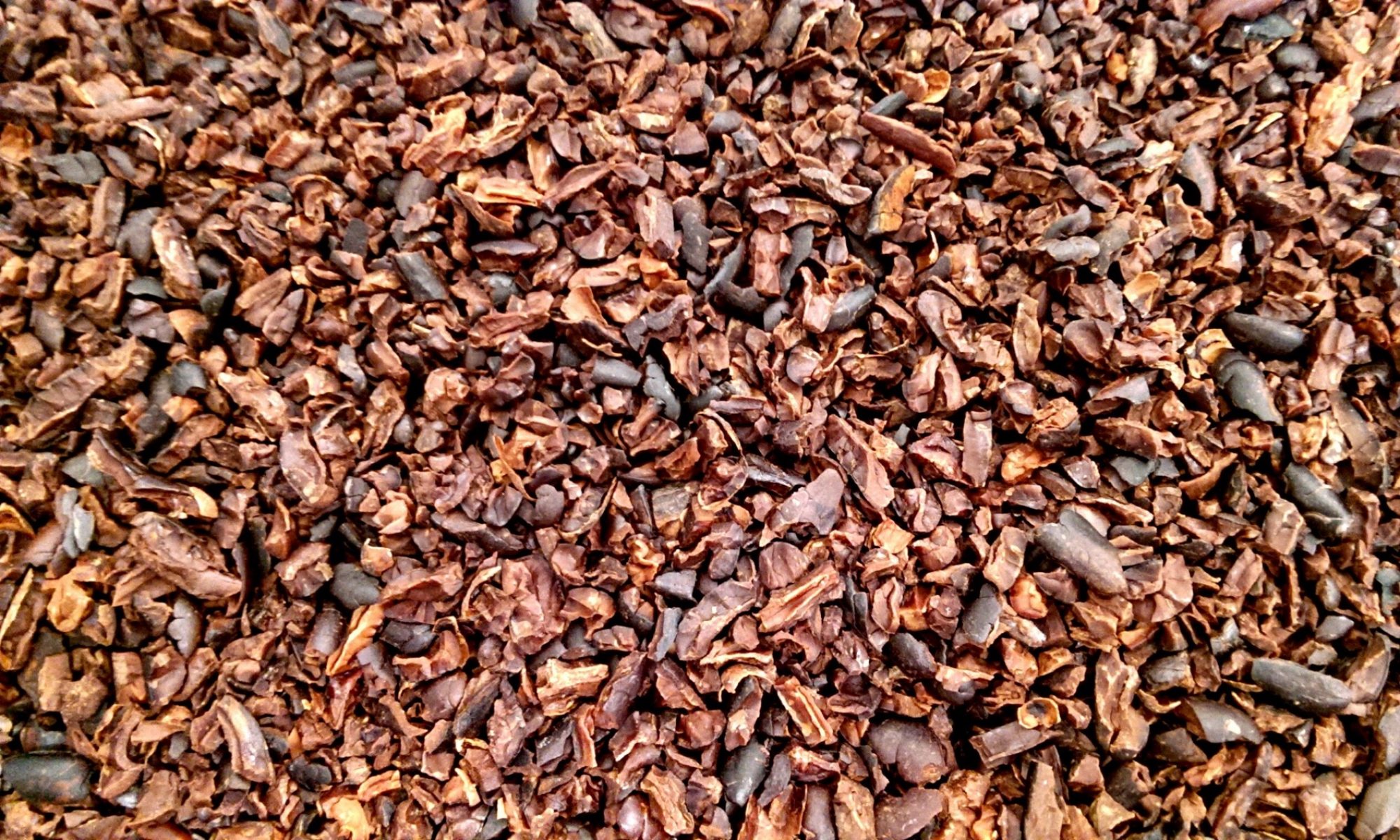- Synopsis
- Damson Chocolate’s “Mocha” dark milk chocolate with coffee.
- Author
- Amanda Greene & Dom Ramsey / Damson Chocolate
- Version
- 1.0
- License
- Creative Commons Attribution 4.0 International
- Short URL
- xtc.tc/105
- Last Updated
- 18 December 2018

Ingredients
- 48% Roasted cocoa nibs
- 14% Cocoa butter
- 6% Whole Milk Powder
- 29.6% Cane Sugar
- 2% Roasted coffee beans
- 0.4% Sunflower Lecithin
Technical Information
- Roast: Standard (20 minutes @ 120°C)
- Grind / Conch time: Standard (24 hours for 3kg Premier grinders, 72 hours for 30kg CocoaTown melangers)
Method
- Sort and roast beans.
- After cooling, break and winnow.
- Slowly add nibs to heated melanger.
- Add pre-melted cocoa butter. This can be added in parallel with the cocoa nibs to help speed the process.
- When nibs and cocoa butter are flowing freely, slowly add the sugar. For larger batches, this can be done on the second day of the 72 hour grind.
- One the sugar has been combined, slowly add the milk powder.
- Pre-grind the coffee beans in a blender, then add them to the melanger.
- Allow to grind / conch for prescribed time.
- One hour before the end of the cycle, add the lecithin.
- Pour into containers and allow to set.
- Temper as per the dark milk chocolate settings of your tempering machine.
Notes
We prefer to do flavoured batches in a small Premier-type melanger, as cleaning larger equipment can be time consuming. For reference, this is how the weights break down when making a small (2.6kg) batch:
- 1256g Roasted cocoa nibs
- 364g Cocoa butter
- 156g Whole Milk Powder
- 775g Cane Sugar
- 52.5g Coffee Beans
- 9.5g Sunflower Lecithin
For this recipe, we used Peruvian cacao (Gran Nativo Blanco from Cacaotales) and Peruvian Union Y Fe coffee beans from our local roasters Catalyst Coffee, hence the name Cafe Peru. The choice of beans (both cacao and coffee) will make a significant difference to the final flavour of your chocolate, so some experimentation will be required to produce the best results.
As the coffee roast is out of the control of most chocolate makers, it is beneficial to work directly with a coffee roaster to find suitable beans. We worked closely with Catalyst Coffee, and when we found a roast that worked, they set aside some coffee to roast over time, so we always had a supply of freshly roasted coffee beans to the correct specification.
Over the course of the grind, the melanger should be able to refine the coffee beans down until the chocolate is extremely smooth. This also releases the maximum coffee flavour evenly throughout the chocolate, meaning you can use a relatively small amount for a full flavoured product.
Tempering any high cocoa milk chocolate can take a little trial and error. We had success tempering this using the dark chocolate settings on our Chocovision tempering machine, but you may want to push your temperatures towards the milk chocolate range if you have problems.
We like to use Sunflower Lecithin in all our milk chocolates as it can significantly aid with viscosity and make moulding much easier. We use it in preference to Soy Lecithin which some people have allergies to. Again, if your chocolate flows readily you may want to omit this entirely and increase the cocoa nib or sugar content accordingly.
We find ageing the chocolate can have a significant beneficial effect on the final flavour of single origin chocolates, particularly those with high acidity. Normally this would be done after grinding and before tempering. Simply set the chocolate aside for 2-4 weeks before tempering and packaging.

License

Liqurice & Sea Salt Chocolate by XTC Chocolate is licensed under a Creative Commons Attribution 4.0 International License.
Based on a work at https://xtc.tc/105.
Permissions beyond the scope of this license may be available at https://xtcchocolate.com/licensing/.
